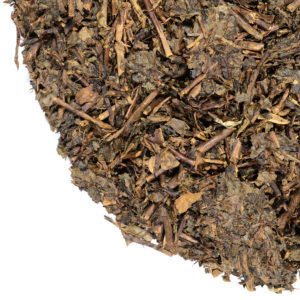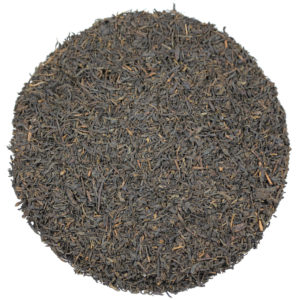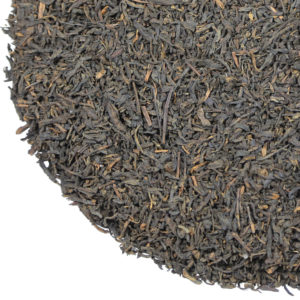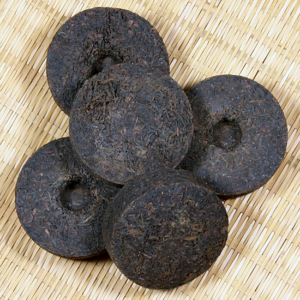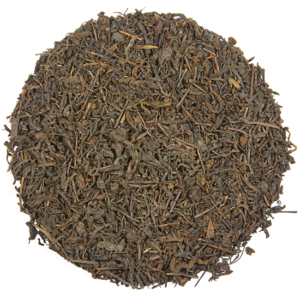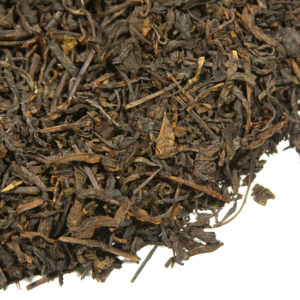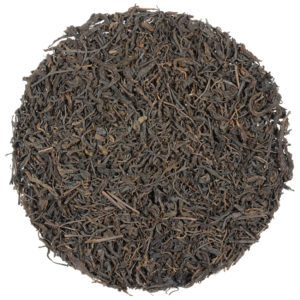
Hei Cha has been made according to traditional methodology for centuries and these unusual and historic teas hold an important place in China’s history of regional tea specialties. Hei Cha or dark tea is a category of wet-pile Chinese tea that includes shou Pu-erh along with other teas such as Hua Juan, Liu’An, Liubao , Qing Zhuan, and Tian Jian.
Different Hei Cha is made with large and medium-sized leaf collected from local tea trees and tea bush varietals located in the high mountain areas of their individual production zones. The basic processing method for the various types of Hei Cha is similar, but exact details of production vary in each place of origin.
Hei Cha is made from fully oxidized leaf and is therefore classified as 'black' or 'dark' tea in China which is different than tea classified as 'red' tea in the Chinese color scheme of tea. But Hei Cha is quite different from what tea drinkers in the West know as 'black' tea. In dark tea manufacture, oxidized tea leaves undergo a wo dui process - wet fermentation - which exposes the leaf to high humidity and moisture over a period of time in a controlled environment in the tea factory.
Some Hei Cha is dried over low pine wood embers, others are not. Hei Cha is dark brown to black in color, and is variously sweet and woodsy, but never astringent. Hei Cha is best with several years of aging but it can also be quite delightful when drunk young. The sweetness of most Hei Cha is a pleasant surprise to many tea enthusiasts who may be expecting something strong and aggressive due to its rustic appearance.
Where is Hei Cha made?
Searching for Hei Cha one may find the following choices:
-
- Hunan Hua Juan ( Hunan Province)
- Liu’An (Anhui Province)
- Liubao ( Guangxi Province)
- shou Pu-erh ( Yunnan Province)
- Qing Zhuan ( Hubei Province)
- Tian Jian ( Hunan Province)
The general descriptions of Liubao, Liu’An, Bai Liang, and Pu-erh may sound similar. But they are unique teas and each is distinctive one from another. Every type of Hei Cha is associated with a particular place of origin in China and are not produced anywhere else in China. Each origin has a unique terroir (soil composition, climate, altitude, weather patterns, tea bush variety) which, when coupled with local and regional manufacturing technique (skills and other minutiae involved in developing fresh leaf into finished tea) and local standards makes each types of Hei Cha distinctive.
History of Hei Cha
Historically, Hei Cha was made in Hunan, Guanxi and Sichuan, and Yunnan Province and shipped to populations of people living close to China’s borders. Most of these teas were compressed into various shapes - rectangles, squares, round discs (both large and small) - to allow for easy transport over long distances and rough terrain. Hei Cha is still found in these fanciful yet practical shapes today, as well as in a few loose-leaf versions.
Hei Cha is not fancy tea. It is not about stylish, tiny, first-plucked spring tea leaves or skillful hand-rolling techniques or perfect leaf shapes and appearance. But we know it as delicious tea, and its simple, dark, brooding demeanor gives it an intriguing and exotic sense of mystery and adventure. At one time various Hei Cha were the life-blood for millions of tea drinkers both inside and outside of China, and was the only tea accessible to them.
Today, much Hei Cha is still exported, and offers another choice of tea for tea enthusiasts, but it is important in many regions of China. Some Hei Cha, such as Liubao, is made with leaf that is thick and large and has some tea bush stems present. For other Hei Cha such as Hunan Tian Jian ( a loose-leaf Hei Cha ) and FuZhuan and JinHua bricks, the leaf is coarse and stems are quiet numerous.
Most Hei Cha, including shou Pu-erh, will keep well and mellow as it ages over time, but it will not transform as completely as will natural, post-fermentation sheng Pu-erh. Production dates are usually given for Hei Cha, and the older the tea is, the more satisfyingly flavorful (and costly) it will be. While Hei Cha have discernible differences, they also have characteristics in common.







